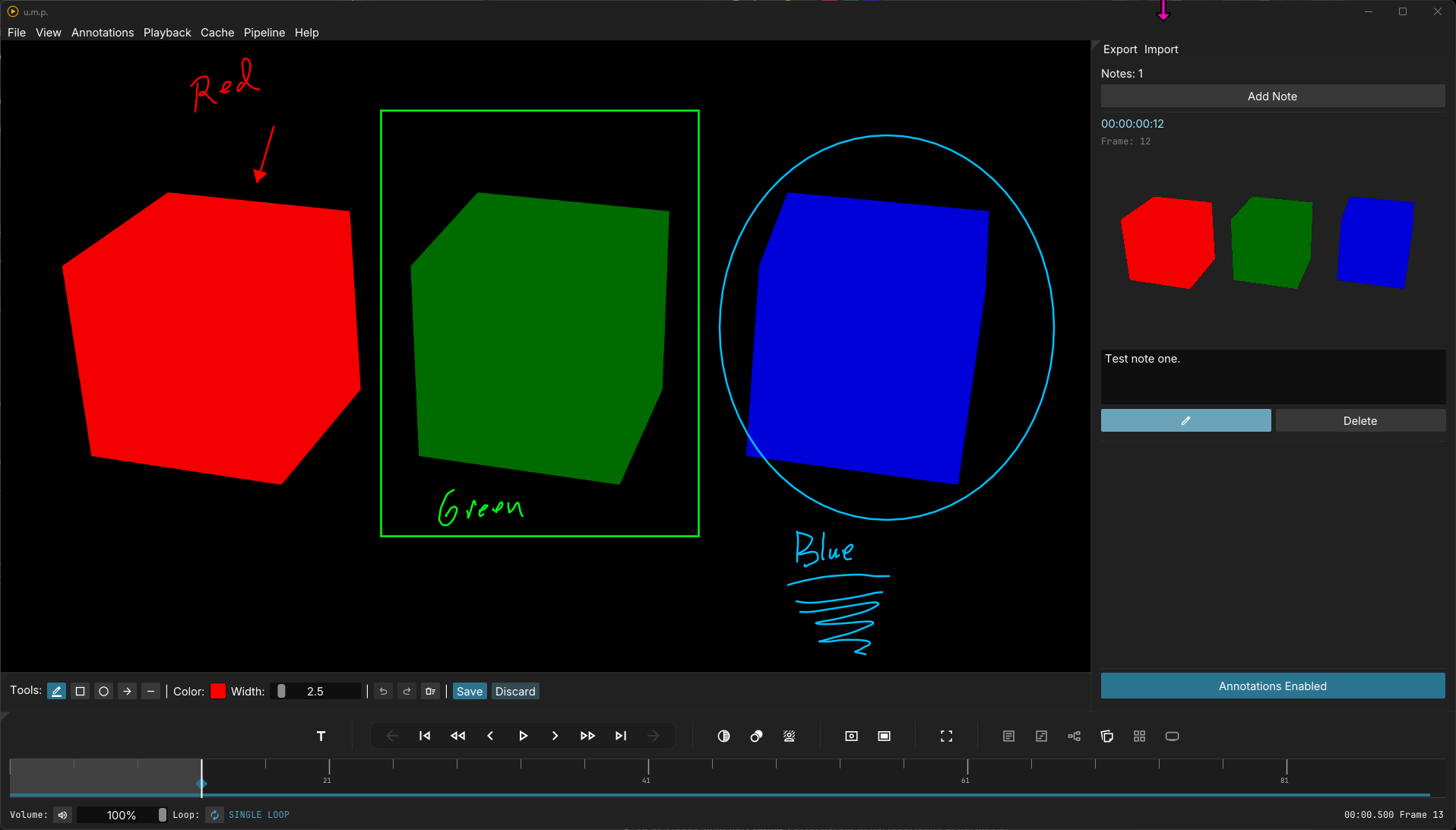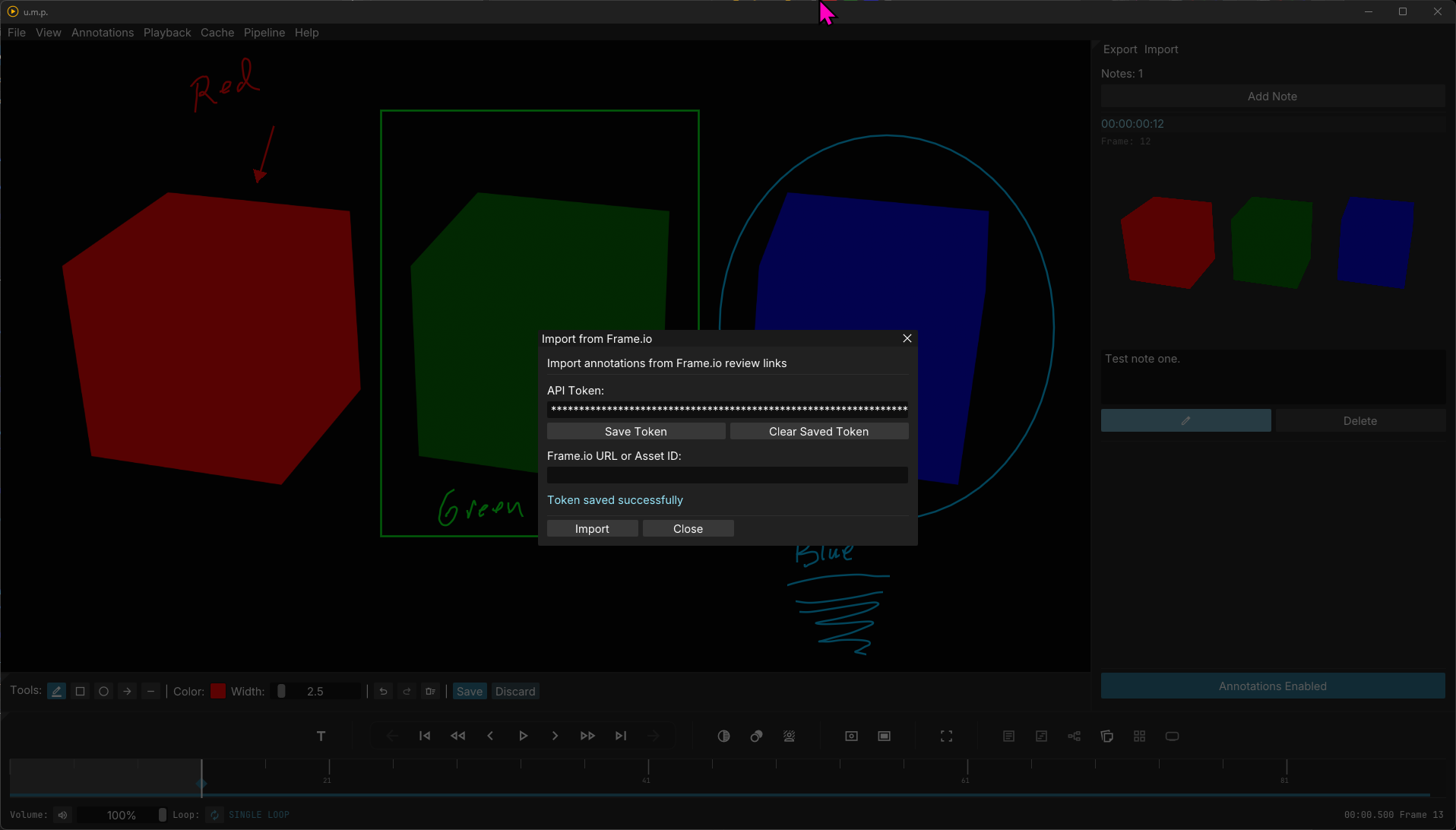Notes & Annotations
The Annotation Panel
u.m.p.’s annotation panel curates a list of all notes and illustrated annotations for loaded media. Notes and screenshots are saved in a .ump folder next to the loaded media, making them accessible to coworkers as well. They will load with the media, if available.

Notes
- To create a new note, click on the
Add Notebutton at the top of the panel. This will create a note at the playhead’s current location in the timeline and create a diamond-shaped marker for visual reference. To edit the note copy, type the message into the box underneath the generated thumbnail image. - To draw annotations on the frame, click on the
Editbutton, with the pencil icon, underneath the text box. When in annotation mode, a toolbar with color and shape options will appear under the viewport. - Don’t forget to save your drawing when you are done annotating.
Ctrl + Zworks for undo, andCtrl + Yworks for redo. - If you don’t want annotations to appear over the video, toggle the
Annotationsbutton at the bottom of the panel to make them invisible.
Exporting Notes
Under Export, in the menu above the annotations window, are a few options for exporting notes, including:
- Markdown
- HTML
Markdown will create a folder structure with the note and exported images. HTML and PDF options embed the images in the document.
Importing from Frame.io
To import from Frame.io, you will need a Developer API token. These are available to any Frame.io user–go to https://developer.frame.io/app/tokens to make one.

- In the top menu, go to
Import->Frame.io. - Add, and optionally save, your API token. (Note: These are not saved securely, so don’t do this on a public computer.)
- Add the URL for the webpage of the video you want to import. Note: This is the actual URL of the video, and not Frame.io’s shortened client URL.
- Press
Import.